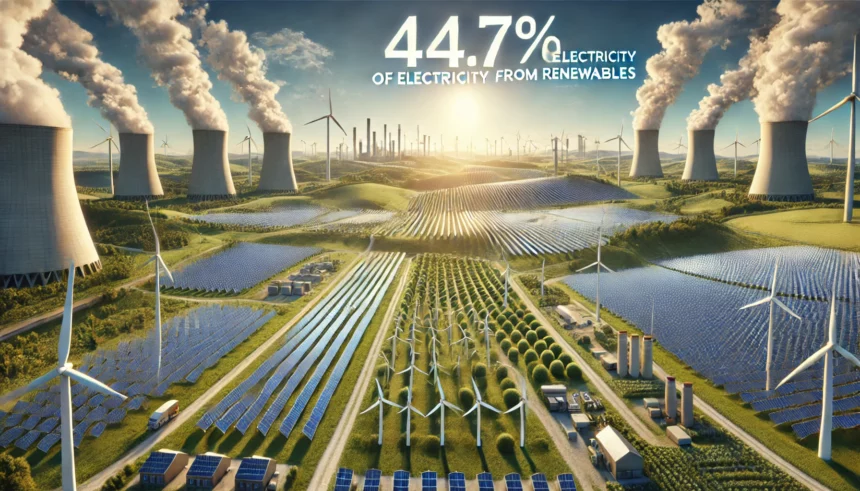Renewables Surge in 2023
In a major shift, renewable energy became the leading source of electricity in the European Union (EU) in 2023. Preliminary data from Eurostat reveals that renewables accounted for 44.7% of all electricity production, generating a total of 1.21 million Gigawatt-hours (GWh). This marks a notable 12.4% increase from 2022, driven by the rapid installation of new solar and wind projects across the region.
Key Figures and Comparisons
- Renewables: 44.7% of electricity production, 1.21 million GWh
- Fossil Fuels: 32.5% of electricity production, 0.88 million GWh (a 19.7% decrease from 2022)
- Natural Gas: 7.4% decrease from 2022, lowest since 1995
- Oil and Petroleum: 1.5% decrease
- Coal: Sharp declines, hitting record lows
Why the Drop in Fossil Fuels?
Several factors contributed to the sharp decline in fossil fuel usage:
- Energy Crisis of 2022: A hot, dry summer affected hydropower and nuclear energy, creating a critical situation for the EU’s electricity supply.
- RePowerEU Plan: This plan aimed to save energy, diversify supplies, and boost the clean energy transition. The decisions made in 2022 under this plan significantly impacted the energy landscape, leading to a rise in renewables and a drop in fossil fuels.
Notable Growth in Renewable Sources
Solar Power
2023 was a record year for solar energy in Europe, with a remarkable 18.9% increase in electricity generation compared to 2022. Solar power is now one of the cheapest forms of electricity in many countries. A study from the University of Exeter and University College London predicts that solar will become the world’s primary energy source by 2050.
- Five-Year Growth: From 2018 to 2023, solar power output increased by an astounding 126.3%.
Wind Energy
Wind energy also saw significant growth, with a 13.4% increase in electricity generation compared to 2022. Offshore projects and growth in countries like the Netherlands contributed to this rise, making wind energy a more substantial part of the EU’s energy mix than natural gas.
Hydroelectric Power
Hydroelectric power production increased in 2023, although it faced limitations due to droughts and hot weather. Despite these challenges, it still contributed to the overall rise in renewable energy.
Conclusion
The shift towards renewable energy in the EU marks a significant milestone. With renewables making up the majority of the EU’s electricity in 2023, it showcases the region’s commitment to a cleaner, more sustainable future. This transition is not only beneficial for the environment but also helps in reducing dependency on fossil fuels, promoting energy security, and combating climate change.
















